2016-08-14 By Robbin Laird
Beginning in March 2014, the Williams Foundation began a series of seminars and workshops to examine both conceptually and practically ways to build a 21st century combat force, which can prevail in the extended battlespace.
This can be looked at as a force operating in what the U.S. Chief of Naval Operations as kill webs or what an Australian Army General called building an Australian anti-access anti-denial strategy.
In our book on Pacific strategy, we referred to the evolving force structure as shaping a honeycomb force capable of presence, reachback and targeted dominance. Alternatively, we have referred to the shaping of a force capable of operating in an integrated offensive-defensive enterprise.
What is unique about what Williams has done is to shape a public discussion of the opportunities and challenges to shaping such a force.
And through the seminars, the conversation has evolved and generated more joint force involvement as well.
The first seminars were largely Air Force driven, as the Air Force shaped its Plan Jericho approach to leveraging 5th generation capabilities. Plan Jericho is about transformation as the RAAF adds new platforms, and rather than adding them like Lego blocks it is about interactive platform modernization and overall force transformation.
This theme was taken to Denmark and the Williams Foundation co-hosted a seminar with the Centre for Military Studies in Copenhagen and discussed the way ahead prior to the Danish decision to buy the F-35 and to become a fifth generation enabled force.
This Danish decision combined with Norway’s and the Dutch acquisition of F-35s combined with the joint UK and USAF operation of F-35s in the UK means that the fifth generation force can enable the shaping of new collaborative approach in a key region of the world.
When I visited RAF Lakenheath in June, I had a chance to talk with the 48th Wing Commander, Col. Novotny about the strategic opportunities inherent in the joint standup.
He underscored that unlike setting up an F-35 base in the United States, standing one up at RAF Lakenheath was about putting the F-35 into play with the UK, the Norwegians, the Danes and the Dutch.
“We are not flying alone; but joined at the hip.
“We will be flying exactly in the area of interest for which the plane was designed and can fly together, maintain together, and operate together leveraging the air and sea base for which the F-35 B will fly from as well.
“It is a unique and strategic opportunity for the USAF and for the nations.
“I’m glad that we are the first base overseas, but I see there is great potential for two countries to develop in concert, side-by-side, and to set, set the model for joint operations.
“As we get this right, we can bring in the Danes, the Norwegians and Dutch who are close in geography and the Israelis and Italians as well to shape the evolving joint operational culture and approach.
“Before you know it, you’ve got eight countries flying this airplane seamlessly integrated because of the work that Lakenheath and Marham are doing in the 20 nautical miles radius of the two bases.”
https://sldinfo.com/synergy-and-building-out-extended-nato-defense/
Clearly, the RAAF has something similar in mind as they work with the U.S. and the Asian allies in the region or to operate in Europe or the Middle East.
The Williams Foundation then extended the discussion to the dynamics of change between air and land forces.
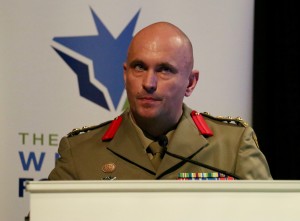
Senior Army and Air Force officers presented their thinking to the seminar on air-land integration earlier this year. The terms of reference for the seminar highlighted the way ahead.
“Air forces need to be capable of delivering air and space power effects to support conventional and special operations in the land domain. Air-Land integration is one of the most important capabilities for successful joint operations.
The last decade has seen a significant shift in how airpower has supported ground operations.
With the introduction of systems like Rover, the ability of airpower to provide precision strike to the ground forces saw a significant change in fire support from a wide variety of air platforms. Precision air dropping in support of outposts or moving forces introduced new capabilities of support.
Yet this template of air ground is really focused on air support to the ground whereas with the shift in the global situation, a much wider set of situations are emerging whereby the air-ground integration approach will become much wider in character, and the ability to insert force rapidly, as a precision strike capability, and to be withdrawn will be a key tool in the toolbox for decision makers.
Fifth generation enabled operations will see a shift to a distributed C2 approach which will clearly change the nature of the ground-to air command system, and the with the ability of fifth generation systems to generate horizontal communications among air assets outside the boundaries of a classic AWACs directed system, the change in C2 will be very wide ranging.”
A number of practical ideas as well as conceptual thinking was provided at the seminar which the foundation followed up in additional sets of meetings.
What was clear in discussing with Army officers during my current stay in Australia is that practical steps have indeed been taken since that seminar which reflects the approach outlined at the seminar.
Two key examples of this are the Army looking clearly to ways to leverage Wedgetail in supporting ground maneuver forces, including having Army officers onboard the aircraft and gaining practical knowledge about the aircraft and becoming stakeholders in the further evolution of the capabilities of the E-7 itself.
Another example is how the new LHDs are being looked at as “magnet” ships drawing together air-sea and land integration.
At Williamtown Air base, the home of the E-7, the virtual Wedgetail system is being used to work with the Army and Navy to prepare exercises this Fall to shape practical ways to work Wedgetail with the LHDs and vice versa. This can then shape a co-modernization strategy for the two platforms, which reflects real joint needs as opposed to an abstract requirements process setting those requirements.
It is also the case according to Brigadier General Chris Mills (in a comment made during an interview conducted during this visit and to be published later) that the Army is working with Navy to shape a common digital communications system to ensure greater integration between the ship and the ashore force. Again, it is a case of the interactive modernization of capabilities, which is crucial to shaping effective force integration.
With the latest seminar, the Williams Foundation addressed air-sea integration.
What was different about this seminar is that it was Navy-led rather than being primarily air force led. Indeed, there was only one RAAF presentation.
It was clear that the senior Navy officers who presented were looking at the evolution of their capabilities from the broader perspective of how to build more lethal and effective forces in the extended battlespace.
And this perspective was built around cross-modernization of platforms delivering joint effects in the battlespace.
Obviously, exercises and training a key elements of shaping a new way ahead, a key point underscored by Rear Admiral Mayer, Commander of the Australian Fleet.
The three closest allies in shaping new maritime capabilities were represented at the seminar – Australia, the U.S. and the United Kingdom.
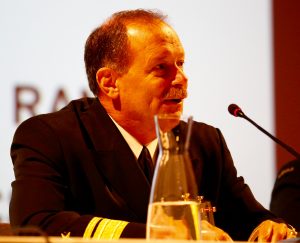
The lead speaker was Rear Admiral Manazir, Deputy Chief of Naval Operations for Warfare Systems (OPNAV N9) who provided an overview of the key dynamics of change in the maritime warfare global situation and discussing the US Navy’s kill web concept.
It should be noted that the first allied force, which actually discussed the kill web concept, was the RAAF. Two days after Rear Admiral Manazir had introduced the concept at a Mitchell Institute audience in Arlington Virginia earlier this year, the Air Combat Commander in the RAAF was taking it onboard.
In that interview Air Commodore Roberton argued that there is a three-phase process underway and “we are only at the first step.
“We need to be in the position where our maritime surface combatants are able to receive the information that we’ve got airborne in the RAAF assets. Once they’ve got that, they’re going to actually be trying to be able to do something with it.
That is the second level, namely where they can integrate with the C2 and ISR flowing from our air fleet.
But we need to get to the third level, where they too can provide information and weapons for us in the air domain.
That is how you will turn a kill chain into a kill web. That’s something that we want in our fifth generation-integrated force.
And in a fifth generation world, it’s less about who is the trigger shooter but actually making sure that everybody’s contributing effectively to the right decisions made as soon as possible at the lowest possible level.
And that is why I see the F-35 as an information age aircraft.
I’m less concerned about the load outs on the F-35. You can give it another ten weapon stations and you would miss the core point.
What’s actually important is how the F-35 makes other weapon providers or effect providers out there far better and shape faster reaction times.
A lot of people seem stuck in the old mindset of how many weapons we are going to stack on each aircraft.
That’s almost two generations ago.
In some ways, we are going back to the concept of military aviation early in World War I where we are the eyes and ears for the combat force forward operating.”
After the opening by Rear Admiral Manazir, there were a number of key presentations by Royal Australian Navy, RAAF and Australian Army officers as well as by the Royal Navy, providing an update on the Queen Elizabeth carrier capability.
Presentations by industry complimented those by the senior officers, as well as closing and opening remarks by senior Williams Foundation officials.
In addition, the final formal presentation of the seminar by John Blackburn of the Williams Foundation who announced the next seminar which will focus on how best to shape a way ahead for more effective integration of the joint force.
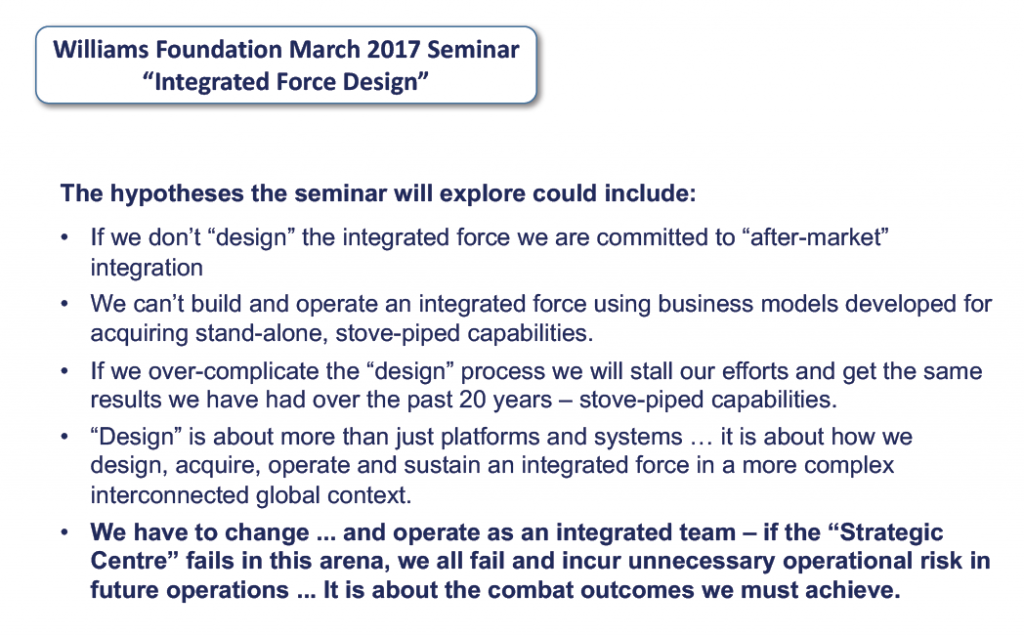
A full report about the seminar will be published in the near future and will include as well a number of interviews with Army, Air Force and Navy done at Amberly, Williamtown, Canberra and Sydney.
It is clear that the Royal Australian Navy is leveraging the LHD coming into the fleet to shape new ways to integrate air, sea and ground power.
It also clear that the coming of the Air Warfare destroyer is seen as an opportunity to expand the sensor shooter relationship as well as shaping ways to task force differently.
Indeed, Rear Admiral Stuart Mayer, Commander of the Australian Fleet, made it very clear both in his presentation and his interview, that a key way to understand the way ahead is shaping variable task force concepts and capabilities.
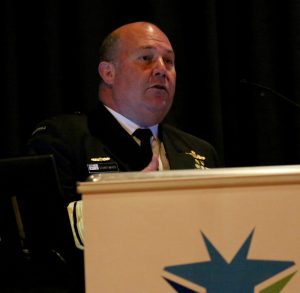
He was clearly looking at a range of ways to operate the force with mix and match capabilities to provide for the kind of maritime power, which was crucial to 21st century operations.
Chief of Navy, Vice Admiral Tim Barrett, made it very clear that he was taking the long view on the development of Australian maritime power and saw the goal as shaping not a joint force but an integrated force.
And in the interview with him, we discussed how he saw the development of the new Australian submarine in the context of shaping an effective way ahead, in terms of an ability to not just to build hulls, but integrated support and effective software upgrades to keep the fleet effective and modern on an ongoing basis.
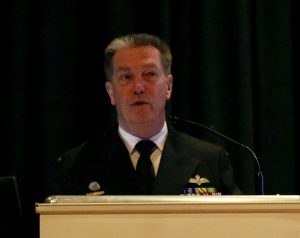
Indeed, the “one ship” concept is crucial to Barrett whereby 21st century infrastructure was being built to shape the fleet in a way in which sustainment, ongoing modernization and operations would be more effectively conjoined in shaping a 21st century fleet.
http://specialreports.theaustralian.com.au/120807/Navy_prepares_to_pack_long_range_punch/
Even though this was a Navy led discussion, the Air Force and Army were key elements in discussing the evolution of maritime operations.
Major General McLachlan, head of Australian Army Modernization, discussed and analyzed the evolving role of the Aussie Army in the defense of Australia through what the U.S. Army would call Air Defense Artillery (ADA) or shaping the lower tier to a missile defense system engaged with the power projection forces.
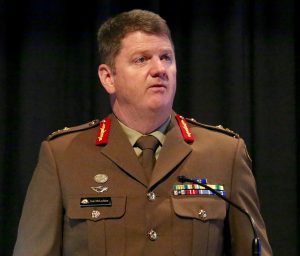
From his perspective, the more effective the territory of Australia could be used to shape effective defenses, the more the Air Force and Navy could focus on extended operations. He characterized this as shaping an Australian anti-access and area denial force.
The key air force presentation was by Group Captain Hombsch, Chief of Staff of the Headquarters of the Surveillance and Response Group. The SRG provides a number of key assets for the joint force to operate in an integrated maritime domain space, such as the Wedgetail and the P-8/Triton dyad coming to the force.
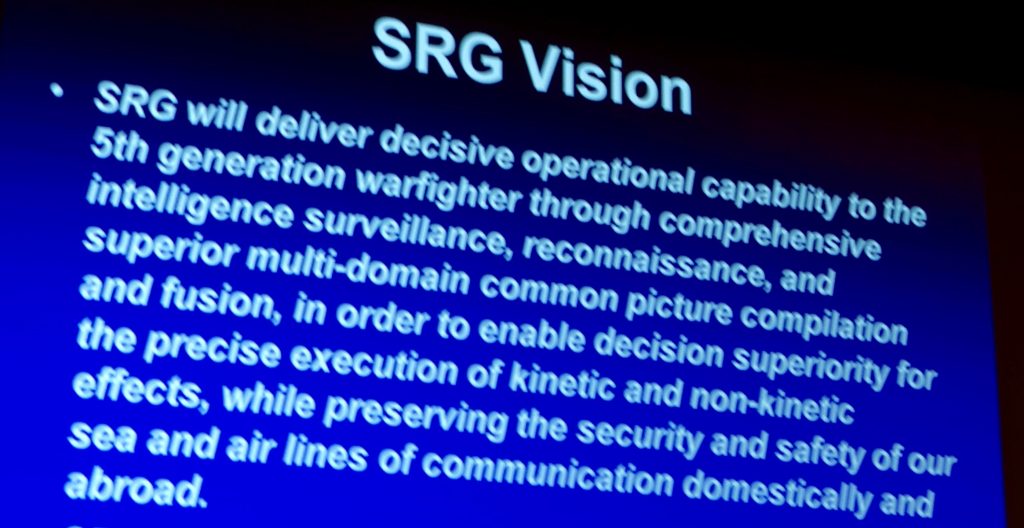
The SRG includes a number of capabilities that in the US forces would be owned variously by the US Army, Navy or Air Force. But with the co-ownership of a diversity of assets, the SRG is well positioned to be a key element for the force transformation underway in Australia.
https://sldinfo.com/the-raafs-surveillance-and-response-group-looks-at-the-way-ahead/
It is clear that significant integration is underway, largely driven by service approaches reaching out to the other services.
A key example of this is Wedgetail.
The Wedgetail is often referred to as an Aussie AWACS, but clearly is not. The AWACs is an AIR battle managements system with the customers being largely the fighter community.
The Wedgetail is evolving towards a ground and naval engagement capability with naval and army officers onboard and with virtual Wedgetail becoming part of the officer training for the Army and Navy this process will deepen in the years ahead.
In many ways, what is being experienced with Wedgetail is what the ADF hopes to bring to the process of overall force design and greater operational integration.
John Blackburn in the final formal presentation, indeed, announced that the Williams Foundation was next looking at how to best shape a way ahead to achieve this outcome.
What was clear with the UK and US participation is that the three key powers are thinking along similar lines.
Indeed, in the presentation by Captain Nick Walker on the Queen Elizabeth, he highlighted that the introduction of the Queen Elizabeth carrier was part of a rethink in the UK along the lines of what the ADF is working on as well.
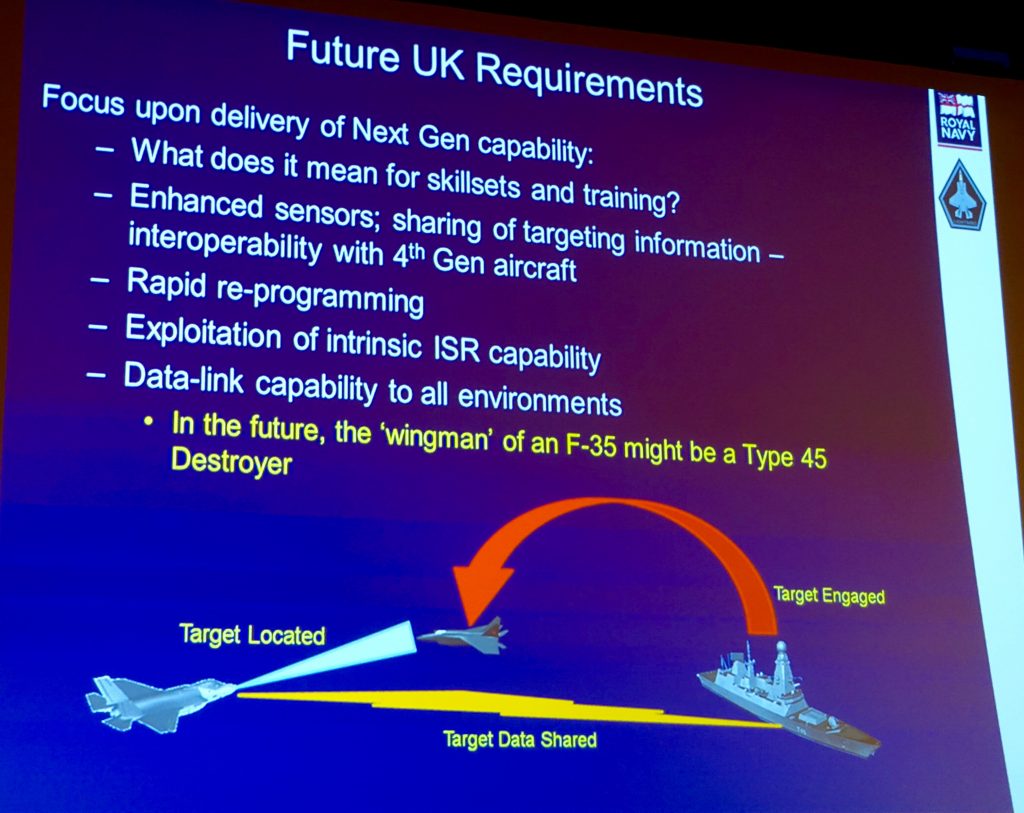
When the seminar was completed, I had a chance to talk with Rear Admiral Manazir about his reactions to his visit and participation in the seminar. That interview will be published in the near future. But I think he captured what the general consensus of the seminar was quite well.
“The Williams Foundation is coalescing around a lot of the issues that we’re trying to solve.
Most often the public discussions are mostly about resources.
That conversation is important but the discussion, which Williams set in motion, is about how to develop a different kind of navy.
The conversation has got to be along the lines of what we had today if we are going to get it right. For this, I thank the Williams Foundation.”
Also see:
https://sldinfo.com/pitch-black-2016-the-perspective-of-air-marshal-davies/
https://sldinfo.com/visiting-wedgetail-at-williamtown-airbase/
For the presentations made at the seminar, see the following:
http://www.williamsfoundation.org.au/seminar-presentations
The terms of reference for the conference were as follows:
“The Royal Australian Navy has had the ability to network and share situational awareness amongst the fleet for many years and the P-3s has been the only RAAF platform capable of being part of that network.
The RAAF’s journey of networking its capability journey started more recently with the Hornet Upgrade Program and has accelerated with the introduction of capabilities like Wedgetail and Vigilaire. All of the RAAF’s fleet is now capable of linking into and contributing to an Air Layer of the Joint Battle management system.
With the advent of 5th Generation capabilities like the JSF and the new combat systems on the AWD as well as the design and development of the new combat systems for the Australia’s future frigates, Offshore Patrol Vessels and Submarines, the ADF has a unique opportunity to influence and design in an unprecedented level of integration into the RAN’s and RAAF’s new platforms. That unprecedented level of integration should drive new thinking on the integration of air and sea power effects. The seminar is about examining the challenges and possibilities of the combat power in that future integrated force.
Air Force and Navy need to not only remediate existing deficiencies but take advantage of the transformative nature of fifth generation technology. The seminar aims to explore the art of the possible in future Air-Sea operations.”
See our earlier discussions of Williams Foundation seminars:
https://sldinfo.com/the-williams-foundation-the-raaf-and-shaping-a-way-ahead/
https://sldinfo.com/air-combat-operations-2025-and-beyond-the-williams-foundation-seminar/
https://sldinfo.com/integrating-innovative-airpower-a-report-from-the-copenhagen-airpower-symposium/

